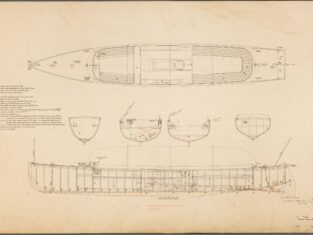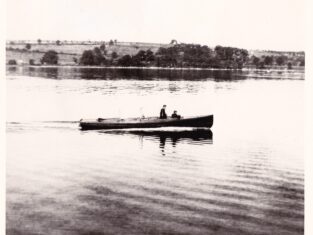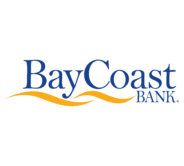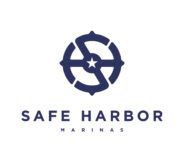
240
Hull No: HMCo. #240
1904 Power Launch
Length Over All: 30' 4"
Length Water Line: 30' 0"
Draft: 1' 5"
Beam: 5' 0"
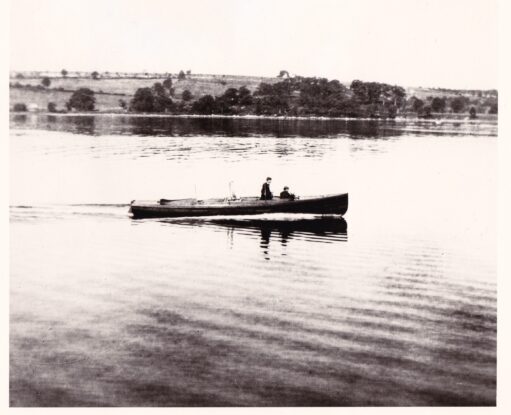
“About 1904 Captain Nat designed an experimental compound gasoline engine…” “… I think his principal object in this design was to make an engine that had a quieter and cooler exhaust. This engine had three cylinders of which the forward and after ones were perhaps one-third the volume of the middle cylinder; the crankshaft was arranged so that when the two end pistons were up the middle one was down, so the engine was nicely balanced. The two end cylinders were of the four-stroke cycle, so timed that one after the other exhausted into the middle cylinder. This engine proved to be smooth running and quiet. It probably had about forty-five horsepower and drove a launch slightly faster than other engines of its time and weight, but Captain Nat became disgusted with it because twice the cylinder block cracked near the exhaust valve. With a little more patience undoubtedly an engine could have been worked out that had a slight increase in economy over the usual gasoline engine together with quietness and a cooler exhaust. It is too bad that this engine discouraged Captain Nat for the Herreshoff Company had a very good machine shop for that time and could have easily jumped into the gasoline engine business…” So wrote L. Francis Herreshoff of the experimental power plant in the 1904 launch, “240.” This period was marked by some of HMCo.’s first applications of the internal combustion engine, and the beginning of their move away from steam power. Ultimately, HMCo. never went into full-on internal combustion engine production as they had with steam power, instead choosing to use engines produced by external manufacturers. 240, for example, received a Simplex engine in June 1906. The launch was entered into numerous power boat races by Captain Nat’s sons between 1904 and ca. 1910, at which point it was sold to C.P. Thomas of Blue Hill, ME. Captain Nat’s son Griswold (then just a teenager) and his friend Charles Rockwell made the delivery together, a run of about 300 miles in this little open launch from Bristol to Blue Hill and around Cape Cod, as the Cape Cod Canal had not yet been completed. Griswold later recalled, wryly, “Before I left, my father said to me that he wanted to speak to me in the other room and I thought that he would talk about navigation to Maine. Instead, he didn’t speak to me about the boat trip, but cautioned me about speaking to people on the train trip back. I had to change trains in Boston and Providence.”
THANKS TO OUR SPONSORS

